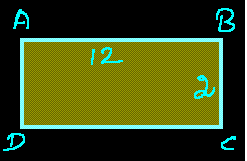Narration is one of the most important concepts in English grammar. While doing narration, certain rules needs to be followed which are termed as the rules of narration. Let’s have a look at some of the most important rules of narration.
Changing from Direct Speech to Indirect Speech:
When the exact meaning of a speech that is direct speech is conveyed in reported or indirect speech, no inverted commas should be used.
Direct Speech: Hary said, “I always buy Newborn Baby Essentials from online baby store as it is fast and easy.”
InDirect Speech: Hary said that he always buy newborn baby essentials from online baby store as that is fast and easy.
1. If the reporting verb is in Present tense or future tense, the tense of the verb is not changed.
Direct Speech: The girl says, “Barbie doll is my favorite toy.”
InDirect Speech: The girl says that Barbie doll is her favorite toy.
2. If the reporting verb is in simple present tense, the tense of the verb is changed into simple past tense in the indirect speech.
Direct Speech: Rima said, “I buy Johnson & Johnson products for my baby.”
InDirect Speech: Rima said that she bought Johnson & Johnson products for her baby.
3. If the reporting verb is in present continuous tense the tense of the verb is changed into past continuous tense in the indirect speech.
Direct Speech: Hary said, “Geeta is dancing a folk dance.”
InDirect Speech: Hary said that Geeta was dancing a folk dance.
4. If the reporting verb is in present perfect tense, the tense of the verb is changed into past perfect tense in the indirect speech.
Direct Speech: Maria said, “I have a car.”
InDirect Speech: Maria said that she had a car.
5. If the reporting verb is in simple past, the tense of the verb is changed into past perfect tense in the indirect speech.
Direct Speech: The lady said, “Many people bought baby products from online stores.”
InDirect Speech: The lady said that many people had bought baby products from online stores.
These are some of the most important rules of narration.
Changing from Direct Speech to Indirect Speech:
When the exact meaning of a speech that is direct speech is conveyed in reported or indirect speech, no inverted commas should be used.
Direct Speech: Hary said, “I always buy Newborn Baby Essentials from online baby store as it is fast and easy.”
InDirect Speech: Hary said that he always buy newborn baby essentials from online baby store as that is fast and easy.
Changing Tenses in Narration:
1. If the reporting verb is in Present tense or future tense, the tense of the verb is not changed.
Direct Speech: The girl says, “Barbie doll is my favorite toy.”
InDirect Speech: The girl says that Barbie doll is her favorite toy.
2. If the reporting verb is in simple present tense, the tense of the verb is changed into simple past tense in the indirect speech.
Direct Speech: Rima said, “I buy Johnson & Johnson products for my baby.”
InDirect Speech: Rima said that she bought Johnson & Johnson products for her baby.
3. If the reporting verb is in present continuous tense the tense of the verb is changed into past continuous tense in the indirect speech.
Direct Speech: Hary said, “Geeta is dancing a folk dance.”
InDirect Speech: Hary said that Geeta was dancing a folk dance.
4. If the reporting verb is in present perfect tense, the tense of the verb is changed into past perfect tense in the indirect speech.
Direct Speech: Maria said, “I have a car.”
InDirect Speech: Maria said that she had a car.
5. If the reporting verb is in simple past, the tense of the verb is changed into past perfect tense in the indirect speech.
Direct Speech: The lady said, “Many people bought baby products from online stores.”
InDirect Speech: The lady said that many people had bought baby products from online stores.
These are some of the most important rules of narration.




